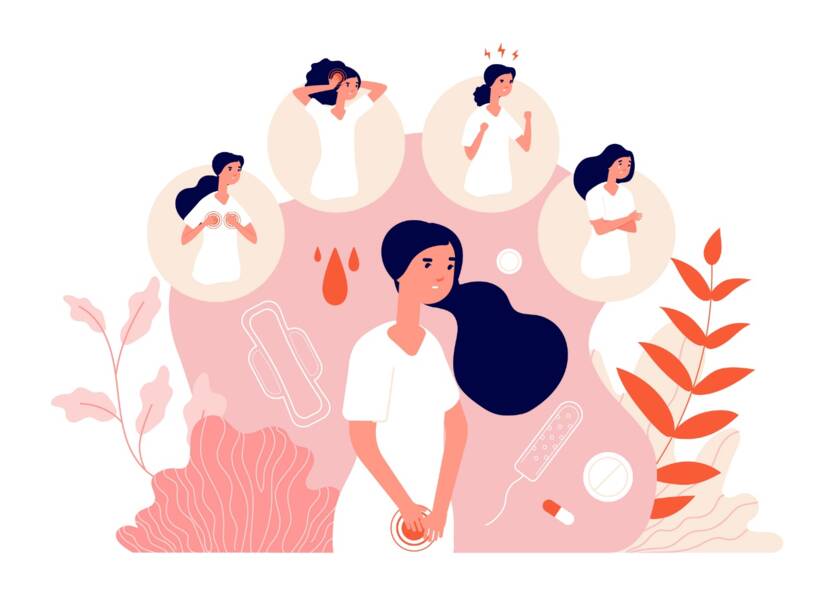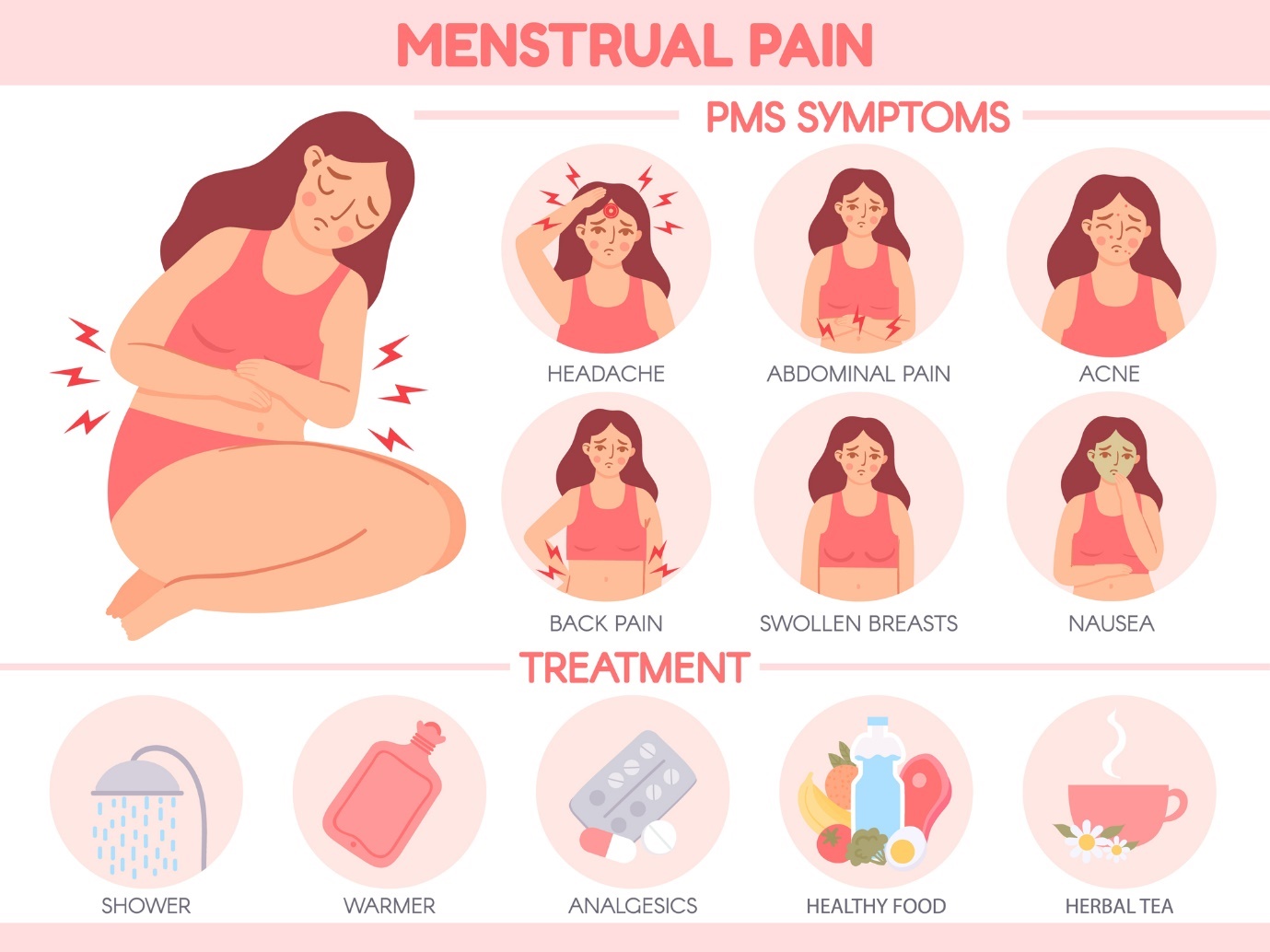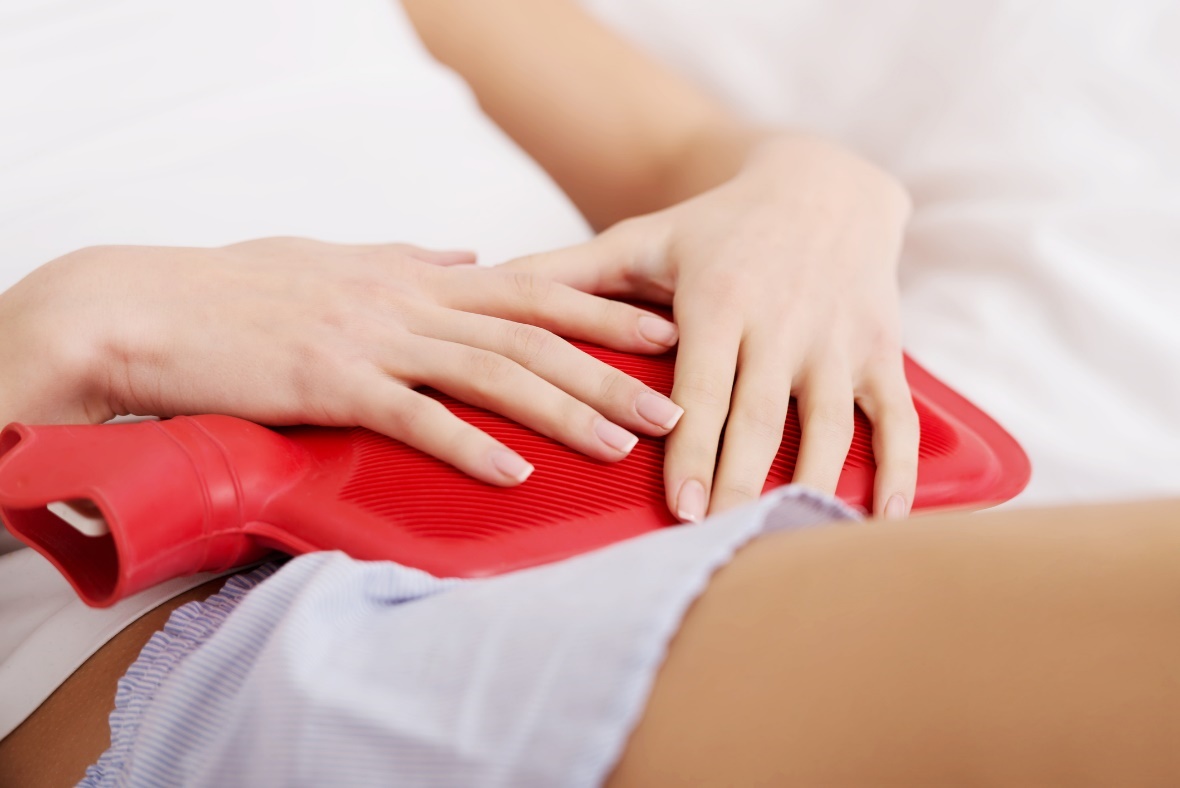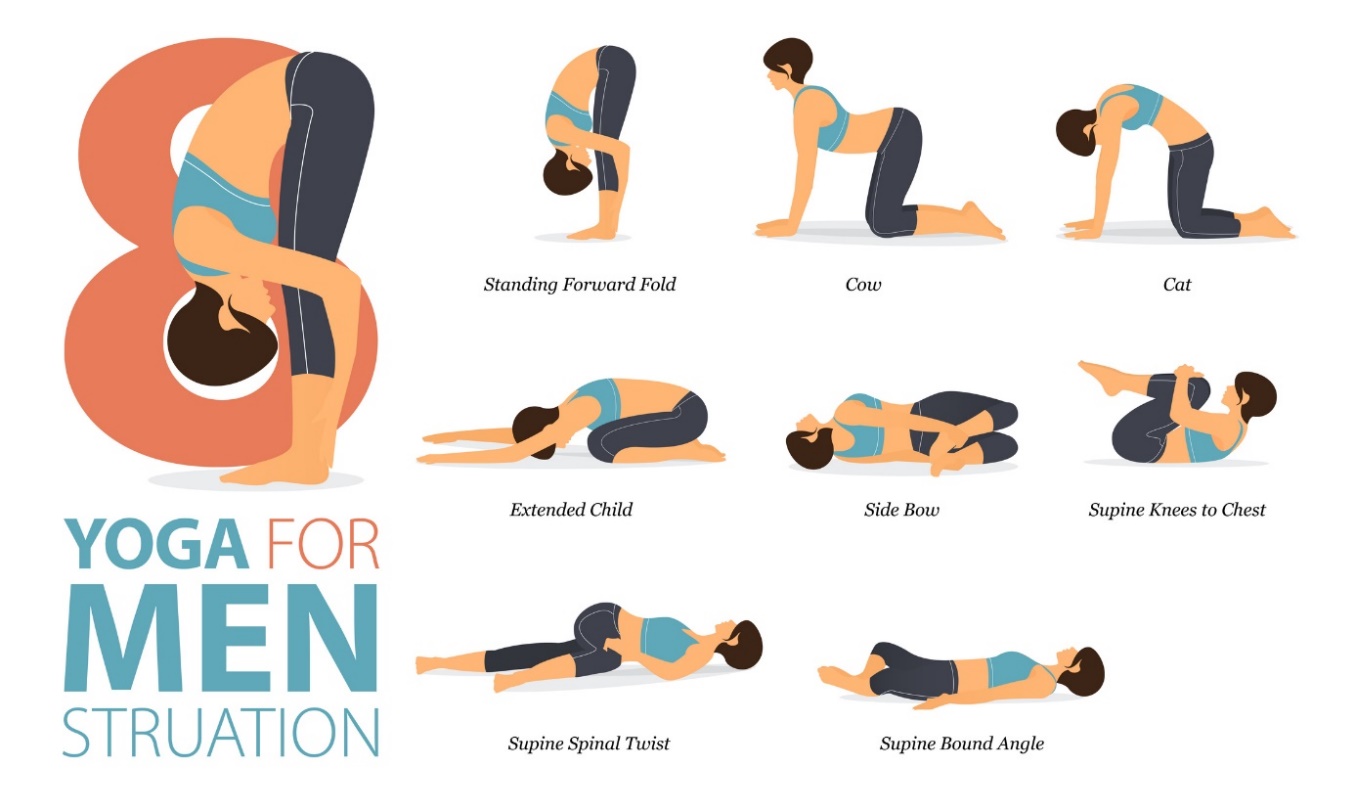- ncbi.nlm.nih.gov - Premenstrual Syndrome. Pratyusha R. Gudipally; Gyanendra K. Sharma
- solen.sk - Overview of the treatment of premenstrual syndrome and premenstrual dysphoric disorder. Igor Lazar, Alexander Ostró
- dspace.cuni.cz - Possibilities of physiotherapy in women with premenstrual syndrome. Bachelor thesis. Hlásková Klára, Táborská, Silvie. Charles University, 1st Medical Faculty
- etheses.whiterose.ac.uk - The premenstrual syndrome: characterisation, diagnosis and treatment. Sarah Elizabeth PhD thesis, University of Leeds
Premenstrual syndrome: what helps with PMS + 5 tips for an easier course

Most women with an active menstrual cycle experience premenstrual syndrome during their lifetime. Why does PMS occur and how can its symptoms be alleviated?
Article content
What does PMS abbreviation mean?
The meaning of PMS abbreviation is Premenstrual Syndrome. It is a set of unwanted symptoms that may accompany the onset of menstruation or menstrual bleeding.
The etiology of PMS is not fully understood.
As a result of hormonal changes and a decline in female hormones, specific physical and psychological manifestations occur in the female body. PMS usually begins to appear around the age of 20 in a woman.
Menstrual cycle and PMS
The menstrual phase of the cycle lasts approximately 3 to 7 days. Physiological bleeding from the woman's vagina occurs. The intensity of the bleeding is individual.
During menstruation, a woman loses approximately 50 to 80 milliliters of blood.
During these days, the woman's body flushes out in the form of blood the detached excess parts of the uterine lining due to the unfertilised egg.
Before the menstrual phase, there is a great drop in the hormones estrogen and progesterone in the woman's body. Low levels of female hormones cause the onset of PMS.
Premenstrual syndrome disappears after the onset of menstruation, when hormone levels begin to rise again.
The most common physical symptoms of premenstrual syndrome are:
- Pain in the lower abdomen
- Pain in the lumbar spine/pelvic pain
- Tender breasts
- Headache, migraine
- Nausea
- Feeling like vomiting
- Acne, skin problems
- Digestive disorders
- Constipation or diarrhea
The most common psychological manifestations of premenstrual syndrome:
- Moodiness
- Hypersensitivity
- Irritability
- Decreased libido
- Anxiety
- Decreased concentration
In case of unclear or excessive manifestations of premenstrual syndrome, a personal consultation with a gynaecologist is necessary.

5 tips for an easier course of PMS
1. Local application of heat
At the beginning of menstruation, there is a reflex muscle contraction and increased muscle tension in the pelvic area, pelvic floor, lumbar spine and abdominal wall.
Local application of heat causes the area to become engorged, blood vessels dilate, blood and lymph are drained and muscle tone (tension) is released.
The consequence is relaxation of the muscles and the elimination of excessive contractions of the uterine musculature (myometrium).
The application of heat in the form of a thermophore, warm compress or warm shower is suitable. Long baths during menstruation are not recommended.
Caution - excessive use of heat may increase the intensity of menstrual bleeding.

2. Herbal tea
The natural form of eliminating the symptoms of PMS is based on the healing effect of herbs. Herbal teas, tinctures, dietary supplements and compresses are used.
Nowadays, we know many herbs with a beneficial effect on the menstrual cycle, otherwise known as "female herbs".
Warm herbal tea should be drunk several times a day before and at the beginning of menstruation. Its effects can relieve painful menstruation, reduce the intensity of blood flow, eliminate digestive problems or harmonise mood changes and manifestations of anxiety.
Women's Herbal Tips:
- Contryhel - supports the harmonization of the cycle and uterus
- Yarrow - supports regularity of cycle length and elimination of painful symptoms
- Kokoschka paste capsule - support the easing of menstrual flow
- Drumstick - support relief of menstrual cramps and pain
- Lemon balm - support psychological well-being and calming

3. Adequate intake of magnesium and potassium
A healthy lifestyle - plenty of appropriate exercise, a well-chosen diet and psychological well-being - is the basis for the prevention of excessive PMS and the overall health of the female organs.
It is advisable to observe any individual dietary intolerances and allergies. It is recommended to reduce the intake of simple refined sugar in the diet. During menstruation, spicy and hot foods, excessive intake of milk, caffeine and sugar are not advisable.
Before and during menstruation, it is important to increase the intake of magnesium and potassium and iron. To eliminate PMS, magnesium is the most important.
Magnesium is a mineral that is beneficial in regulating muscle spasms and relieving muscle tension.
In addition to dietary supplements, magnesium should be taken in the diet (avocados, broccoli, spinach, sunflower seeds, beans, dark chocolate...). In painful PMS, the recommended dose of magnesium is slightly increased.
Potassium (kalium) is also a mineral useful for regulating muscle tone and nervous system activity. Dietary sources of potassium include banana, orange, fish, potatoes, beans, peas or tomatoes.
During menstruation, it is important to take iron because a woman loses approximately 50-80 milliliters of blood.
With enough iron in the body, we can prevent the feeling of nausea. In the diet, it can be found in the form of nuts, broccoli, tofu or red meat.
Beware of frequent use of analgesics...
Good servant, bad master.
Ananalgesic is a painkiller. It is an excellent servant, but a bad master. It is often an excellent choice, especially for the unrelenting pain or unrelenting headache of PMS.
When choosing an analgesic, it is advisable to pay attention to its formulation or focus. For premenstrual syndrome and uterine myometrial muscle spasms, it is advisable to reach for an analgesic that acts primarily on the muscle type of pain, if necessary.
Analgesics control the pain but do not treat the cause. In case of excessive prolonged and regular pain, it is advisable to see a specialist as analgesic is a drug that puts a strain on the body.
4. Massage and plenty of rest
A suitable option is gentle self-massage of the abdomen and lower abdomen with one's own hands. By applying minimal pressure, we create an imaginary circle in the direction of peristalsis.
The massage should be pleasant and painless. It helps to relieve muscle spasms, relieve digestive problems and relax the reflexively stiff abdominal wall.
Beware of massaging with a lot of force, pressure and in the wrong direction - this can make PMS feel worse.
It is common to feel tired, sleepy or exhausted due to a drop in hormones. It is therefore advisable to give the body and mind more rest than on other days. It is advisable to adopt a lying position and give yourself the rest you need.
5. Relief positions for PMS
Specific exercises and positions can be used to relieve the soreness and increased tension of the abdominal and pelvic muscles during premenstrual syndrome.
The aim of relief positions for PMS is to:
- Stretch and relax the abdominal wall
- Stretch the muscles of the lumbar spine
- Automobilization of the spine and pelvis
- Automobilization of the sacroiliac joint
- Activation of diaphragmatic (abdominal) breathing
Through somatovisceral (muscle-organ) relations, muscle tension is released and uterine muscle contractions are eliminated. Blood flow to the blood vessels in the pelvic region is increased.
The postures in the following figures should be performed slowly, not with a jerk. It is recommended to remain in the position for a longer period of time and to breathe consistently using lower diaphragmatic (abdominal) breathing.
Choose a few that suit you and eliminate the painful symptoms of PMS.
Baby's position
The woman lies on her back with no space between the spine and the mat. The head is in extension of the spine and the shoulders are loosely placed away from the ears.
She bends her lower limbs at the knee joints and slowly draws her knees towards her abdomen/chest. She helps herself with her arms and draws her limbs even closer to her body. The tailbone is slightly in the air.
In this position, he tries to relax, stretch his back and breathe deeply into the abdomen. The position should be comfortable. After a while, he places his lower limbs on the ground.
Cobra position
The woman is lying on her stomach, with her lower limbs stretched in extension of her spine. Her eyes are looking towards the mat. Her arms are lowered away from her ears and her palms are placed on the mat.
She then slowly pushes her head and body away from the mat and pushes off with her palms until the elbow joints are extended. The abdominal and pectoral muscles are stretched. The pelvis remains glued to the mat during the exercise.
In this position, the woman breathes deeply and continuously into the abdominal and chest area. She then returns to lying on her stomach after a while.
Pelvic rotation position
The woman is in the supine position. The lower limbs are extended and the upper limbs are loosely planted on the mat. The head is in extension of the spine, the arms are loosely lowered from the ears and the eyes follow the ceiling.
The left lower limb makes a movement to the right across the axis of the body. The left knee is placed on the mat on the right side. The head looks to the opposite side. There is stretching and mobilisation of the spine, ribs and pelvis.
In this position, he breathes smoothly into the diaphragm. After a while, the legs and sides are switched.
Bow tie position
The basic position is lying on the back, the spine is all flat on the mat. The upper limbs are loosely placed close to the body, the head is straight in extension of the spine. The lower limbs are bent at the knee joints.
The feet are glued to the mat. The legs are released to the side (knees) with the feet in place. The posture resembles a frog or butterfly.
In this extreme position we stretch the inner thigh muscles, abdominal wall and pelvic area. We breathe freely into the abdominal area and release the tension of the abdominal muscles.

Read also.
Interesting resources
Related










